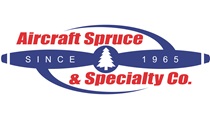
Savvy Maintenance: Opinion
Crisis averted
The disaster that didn’t happen
As I write this, the aviation blogosphere and Twitterverse are abuzz over the near-disaster at San Francisco International Airport, when an arriving Air Canada Airbus A320 on a night visual approach came scant seconds—and less than 100 feet—from touching down on a parallel taxiway where four other airliners were queued up for takeoff. It was teamwork—a radio call by an alarmed airline pilot prompting the tower controller’s instruction to go around—that averted what might have been one of the worst accidents in aviation history. Fortunately, that catastrophe didn’t happen.

I’m focused on another near-disaster, one that hit closer to home. I’m talking about the threatened airworthiness directive against camshaft gears on Continental 520- and 550-series engines that might have cost the owners of Bonanzas, Cessnas, Cirruses, Columbias, Mooneys, and other Continental-powered general aviation airplanes tens of millions of dollars a year. My own Cessna 310 has two of the affected engines.
This disastrous AD didn’t happen, but it came perilously close. As with Air Canada, last-minute teamwork saved the day.
How it all began
Fifteen years ago, Continental Motors learned of a few camshaft gears with missing or damaged teeth in 520- and 550-series engines. This is the large, thin gear bolted to the back of the camshaft that is driven by a smaller, thicker gear bolted to the crankshaft. These gears drive the camshaft at one-half crankshaft speed.
Nobody knows what caused these gear teeth to fail. The gears had been in service since the 1960s, and failures were extremely rare. Continental tested the hardness and metallurgy of the failed gears and found they met specifications. There was some speculation that the tooth failures might have resulted from violent kickbacks during engine start, but it was impossible to be sure.
In an abundance of caution, Continental designed a new camshaft gear that was a bit thicker (by 0.06 inches, the thickness of a penny). The Continental factory began installing these more robust gears on all new and rebuilt engines starting in 2005, and issued a service bulletin (SB05-8) announcing the availability of the improved gear and suggesting it be installed at engine overhaul.
The new gear was about $1,200, and few engine shops followed Continental’s suggestion to install the pricey gear at overhaul. Although there had been no known accidents attributable to camshaft gear failure, Continental became increasingly anxious to get the thinner gears retired. So, in November 2009, Continental revised its service bulletin SB97-6 (“Mandatory Replacement Parts”) to require the older-style camshaft gears to be replaced with the new, thicker gears at overhaul. Continental undoubtedly believed this would be the end of the matter. But it wasn’t.
Engine shops continued to overhaul Continental 520- and 550-series engines without replacing the thinner camshaft gears with the thicker ones. I spoke to numerous overhaul shops, and all said the same thing: They inspected the gears both visually and using magnetic particle inspection, and reused them if they passed inspection (which almost all did).
It had always been my understanding that compliance with the manufacturer’s current guidance was mandatory for an engine repair to be documented as an overhaul. I imagine Continental thought it was, too. But the engine shops presumably believed it is just a service bulletin, and not even a mandatory one, so they didn’t feel obligated to comply.
The FAA gets in the act
In December 2015, a Beechcraft Bonanza sustained an engine failure that resulted in a successful on-airport forced landing. The cause of this incident was determined to be fatigue fracture of three adjacent teeth of the camshaft gear (a thin one). This got the FAA’s attention.
The FAA’s Atlanta Aircraft Certification Office (ACO) started discussing the camshaft gear issue with Continental, which told them of two other cases of fractured camshaft gear teeth (neither of which involved an in-flight engine failure). In December 2016, the FAA issued an airworthiness concern sheet expressing concern about these gear failures, and soliciting input from the aircraft owner community before deciding what corrective action to take, if any. But the owner community was unaware of any significant issues with these gears, because failures were extraordinarily rare.
The FAA asked Continental to rewrite its original 2005 camshaft gear service bulletin in a form the FAA could reference, should it choose to issue an airworthiness directive. Continental published Mandatory Service Bulletin MSB05-8B on March 29, 2017.
Blindsided
Unlike its predecessor, MSB05-8B required that all engines that used the older-style gear be disassembled and the new-style gear installed “within 100 hours of operation, at the next engine overhaul (not to exceed 12 years engine time in service), or whenever camshaft gear is accessible, whichever occurs first.” This meant that many thousands of low-time-since-overhaul engines would need to be torn down within 100 hours, and that any engine overhauled more than 12 years ago would need to be torn down before further flight.
Alarmingly, this was issued as a mandatory service bulletin (MSB), which Continental defines as one that “has been incorporated in whole or in part into an airworthiness directive (AD) issued by the FAA or have been issued at the direction of the FAA by the manufacturer requiring compliance with an already-issued AD.” It was not issued as a critical service bulletin, which Continental says is a “candidate for incorporation into an FAA airworthiness directive.”
Continental seemed to be saying an airworthiness directive was a done deal. Continental tech reps responded to owners’ questions at Sun ’n Fun with authoritative-sounding gravitas, “there will be an AD.”
Owners of Continental-powered aircraft went into a predictable uproar. Type club forums were awash with cries of disbelief, expletives, and demands for class-action lawsuits—both against Continental Motors and against the overhaul shops that elected to overhaul engines without installing the new-style camshaft gears. In the meantime, the resale market for Continental-powered aircraft seized up. Buyers walked away from deals and prices went into freefall.
Getting our act together
I phoned AOPA Senior Director of Regulatory Affairs David Oord, with whom I’d worked several times in the past. I knew Oord to be the consummate inside-the-beltway advocate, whose diplomatic skills contrasted sharply with my bull-in-the-china-shop approach. Oord was as horrified as I was, and agreed we needed to push back aggressively against the mandatory service bulletin.
Oord and I decided we should put together a coalition of type clubs representing the most affected owners. Tom Turner at American Bonanza Society, Roger Whittier at Cirrus Owners and Pilots Association, and Bob Thomasson and Tony Saxton at Twin Cessna Flyer all agreed to join hands in dealing with this crisis.
On April 14, 2017, our coalition had a productive and candid hour-long discussion with the Atlanta ACO and FAA Engine and Propeller Directorate. Although the FAA representatives couldn’t tell us what the agency was going to do about MSB05-8B (as this had not yet been decided), we got the impression they were as surprised by what Continental was proposing as we were. One FAA employee told us emphatically, “We do not intend to mandate the MSB as written.” He said the FAA had asked Continental to make some revisions, and then would be convening a formal review board to decide what corrective action to take. We asked if we could submit a position paper on behalf of the affected owners for consideration by the corrective action review board during its deliberations, and they said sure.
Making our case
Our little group went to work, gathering all the information we could about the failure history of these camshaft gears; talking to overhaul shops to find out what they were finding during overhauls and other teardown inspections; and delving into the technical aspects of metallurgy, crack propagation, fatigue limits, and other arcana.
In the meantime, on April 20, Continental issued a press release stating that the company was “working diligently with the FAA to make significant amendments to MSB05-8B. We expect this to happen in the next 15 days.” Continental indicated the revised MSB would include a program of repetitive inspections that would allow the camshaft gears to remain in service “on condition” until the next overhaul.
On May 1, our coalition submitted its 10-page paper to the FAA. In it, we stated that we didn’t object to an AD mandating gear replacement at overhaul, but we were adamantly opposed to any FAA mandate of preemptive gear replacement or repetitive gear inspections. (Performing such inspections would require engine removal on some aircraft models, and substantial disassembly on others.) We furnished some calculations of camshaft gear failure rates demonstrating that the camshaft gear is arguably the most reliable, least failure-prone steel component of the engine. (Connecting rods and crankshafts fail much more often than camshaft gears do.) We argued forcefully that the extremely low crankshaft gear failure rate did not rise to the level of “an unsafe condition” required to justify the issuance of an AD.
End game
May and June passed with no word from Continental. Then in early July, Oord told the members of our group Continental was about to issue the long-awaited revised MSB and had asked to discuss it with us prior to publication. We were surprised and delighted that Continental was reaching out to us, and agreed to a meeting on July 13.
Continental told us it was planning to release a new MSB05-8C the next day. The new MSB would call for visual inspections of older-style camshaft gears at every annual or 100-hour inspection (whichever was applicable to the aircraft), with gear replacement mandated at the next overhaul or case-splitting event. Detailed instructions would be provided for replacing the camshaft gear without splitting the case (although engine removal and stripping of accessories would be necessary).
We asked the Atlanta ACO, which also participated, if the FAA had decided to mandate compliance with this new MSB. A representative said a decision had not yet been made. We learned that the FAA and Continental had uncovered only seven documented camshaft gear failures from 1964 to the present, the majority of which were unrelated to any in-flight engine anomalies. We also learned that an estimated 26,000 engines would be affected by the MSB.
We made a strong appeal for Continental to issue its revision as a CSB rather than an MSB, given that the FAA had not yet decided whether an AD was warranted. We also urged the FAA to think carefully about whether such a tiny number of gear failures over such a long time period—most of which had no safety consequences—really rose to the level of “an unsafe condition” under the FAA’s guidelines.
The next day, each of us received a call from Continental Director of Marketing Emmanuel Davidson, who gave us wonderful news: After considering our comments and conducting further discussions with the FAA, Continental had decided to issue its revision as a critical service bulletin, and the FAA had decided no AD was warranted at this time.
This was a marvelous outcome for owners of Continental-powered aircraft, and it was achieved through the most constructive and cooperative interaction I’ve ever seen among owners, a manufacturer, and the FAA—and I’ve been doing this for a long time. I sincerely hope this will become a model for how such situations are dealt with going forward. Kudos to Continental and the FAA for listening with open minds, and ultimately doing the right thing. Don’t you just love happy endings?
Mike Busch is an A&P/IA.
Email [email protected]



